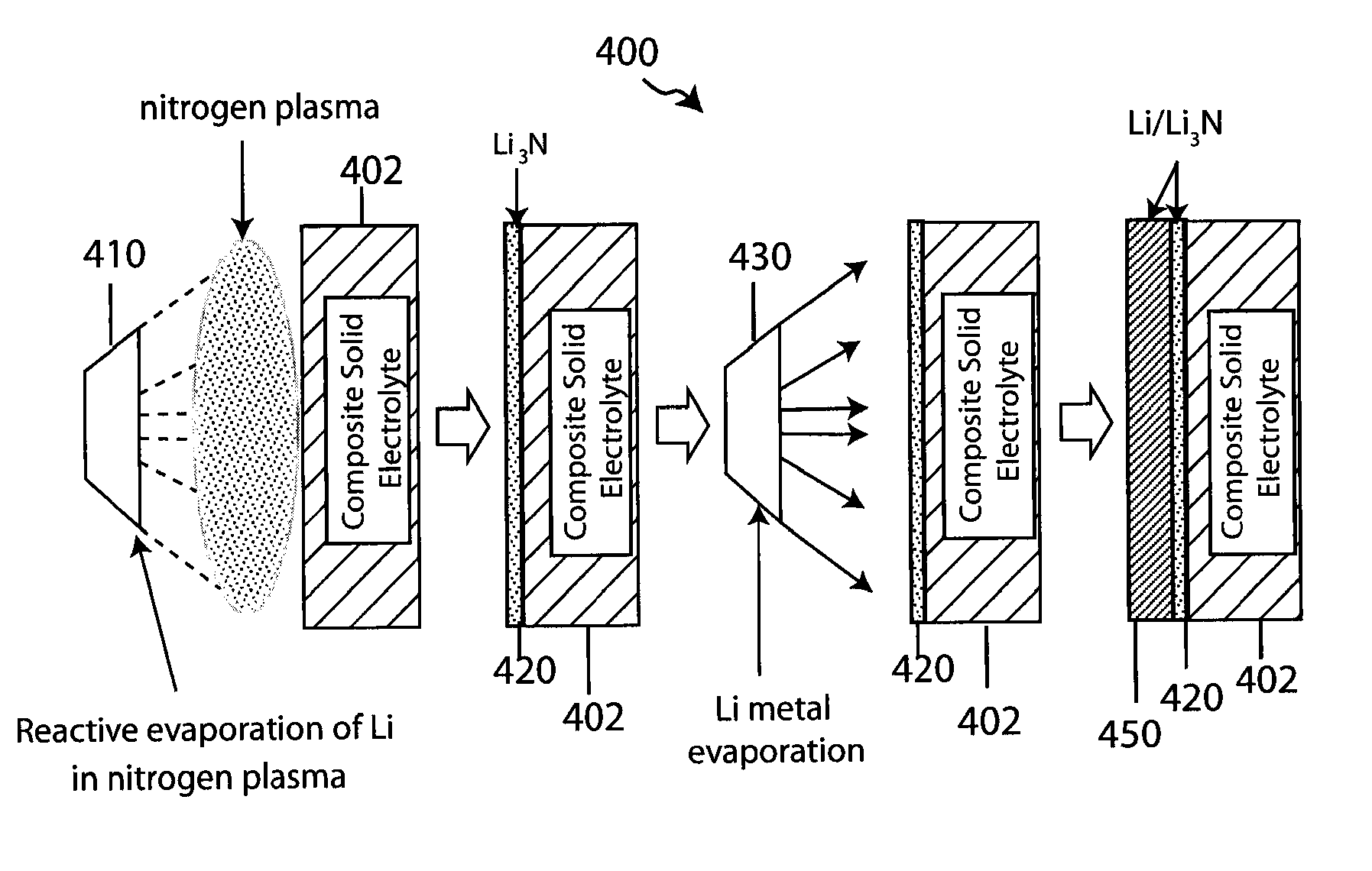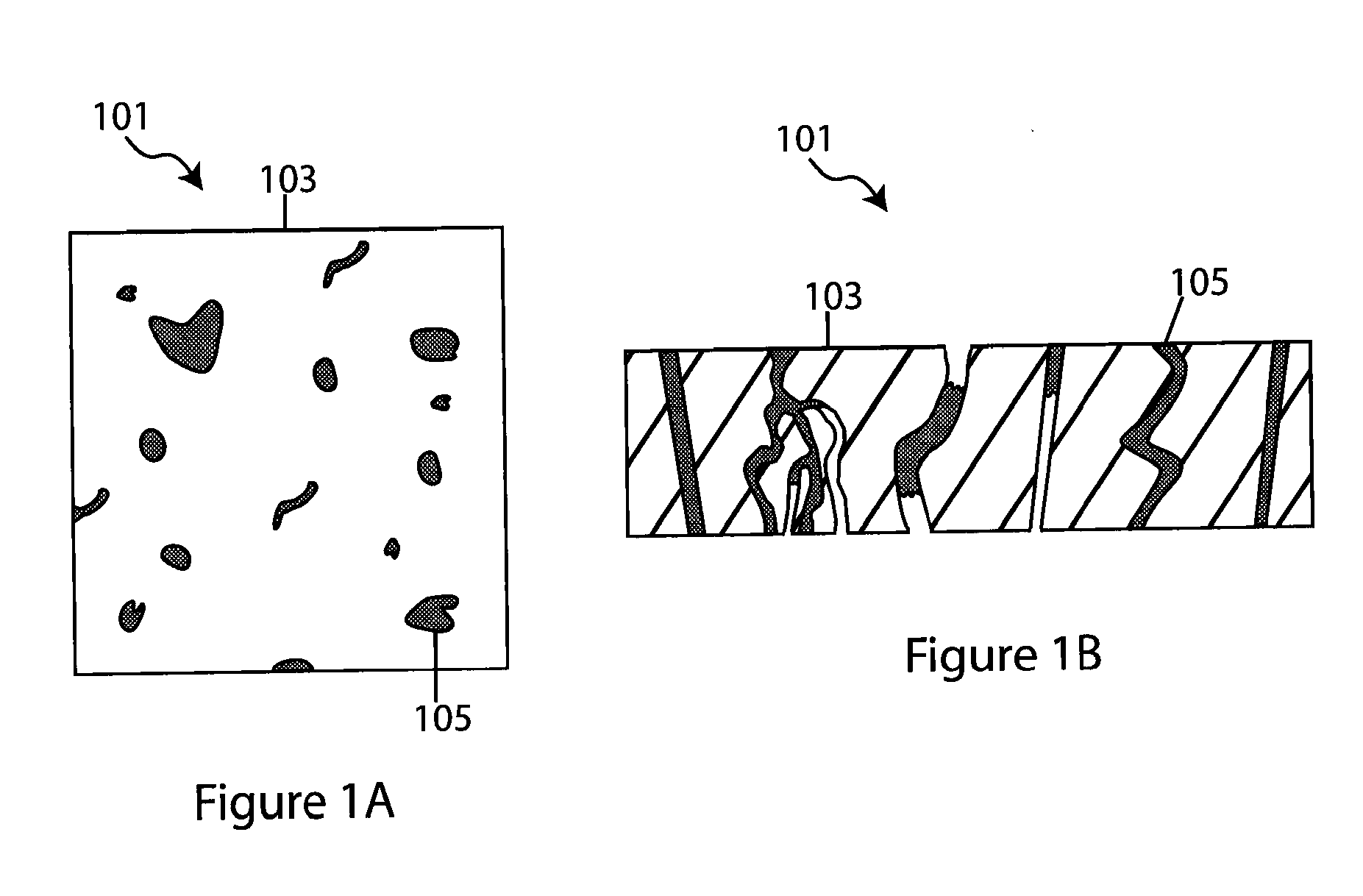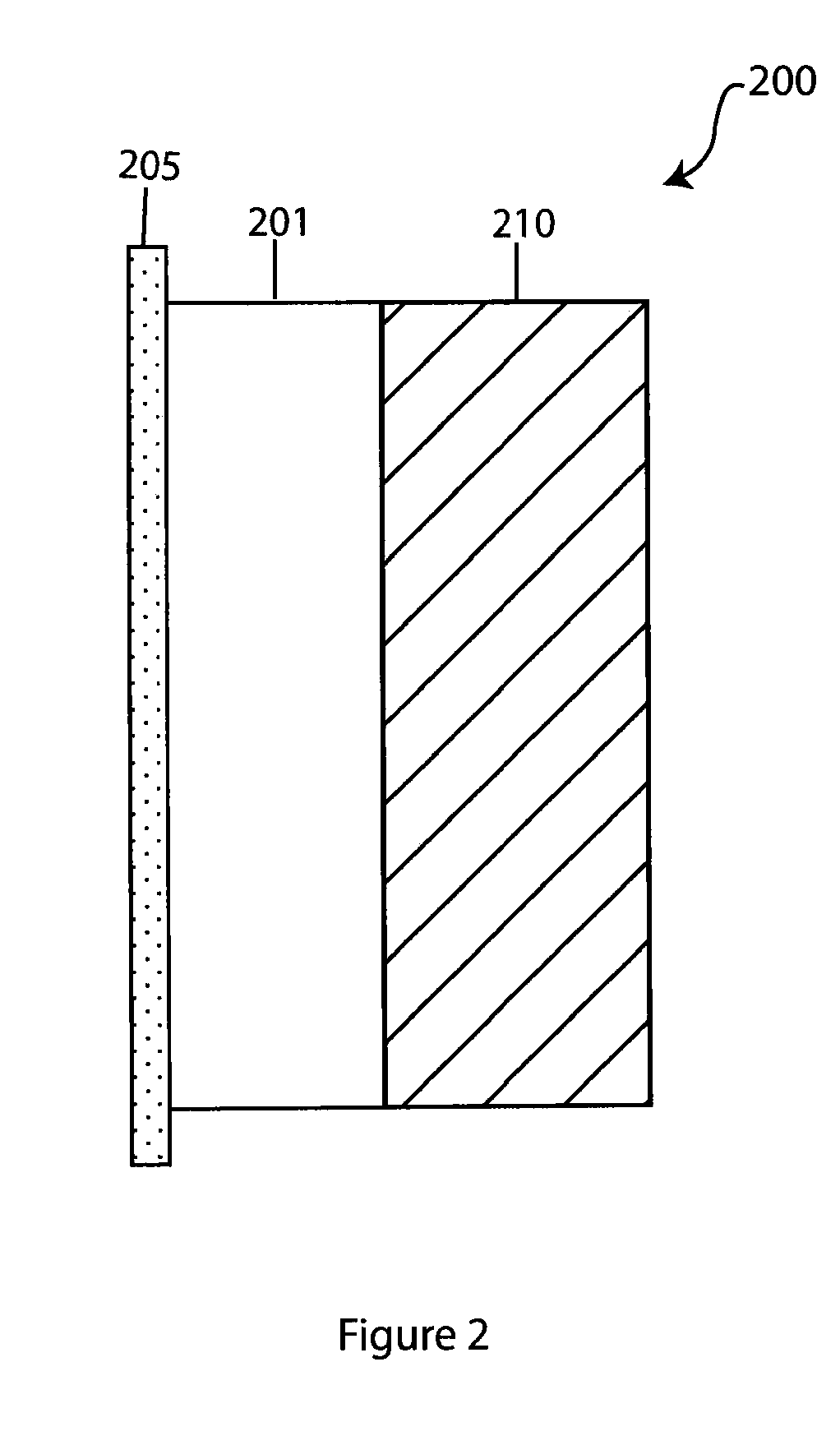Composite solid electrolyte for protection of active metal anodes
a solid electrolyte and active metal anode technology, applied in the field of electrochemical cell components and structures, to achieve the effect of reducing through-porosity and high metal ion conductivity
- Summary
- Abstract
- Description
- Claims
- Application Information
AI Technical Summary
Benefits of technology
Problems solved by technology
Method used
Image
Examples
example 1
Fabrication of Composite Solid Electrolytes Formed by Vacuum Impregnation
[0197] One of the advantageous properties of some epoxy embedding media is low viscosity, prior to hardening or curing, that facilitates filling a solid electrolyte base component having a wide range of pore sizes, including micron and sub-micron pore sizes, which may exist in ceramic membranes. Good results have been achieved with a low viscosity epoxy embedding media (EEM) containing glycerol glycidyl ethers and anhydrides as hardeners. Maleic anhydride, 2-dodecenylsuccinic anhydride (DDSA) and methylnadic anhydride (NMA) are particular examples of such hardeners. Tris(dimethylaminomethyl)phenol (DMP-30) can be used as an accelerator in this system.
[0198] Li-ion conductive sintered ceramic membranes (solid electrolyte base component) with NASICON-type structure and with dimension of 1″×1″ were received from OHARA Corporation, Japan. The membranes were 200 to 400 microns thick. An epoxy embedding media (EEM)...
example 2
Comparative Leak Testing of a Composite Solid Electrolyte vs. an Unfilled Solid Electrolyte Base Component
[0200] The composite solid electrolyte was fabricated as described in Example 1 and was leak tested to determine imperviousness. For comparison, leak testing of the unfilled base component was also performed.
[0201] The ceramic membranes (solid electrolyte base component) of 1″×1″ in size, one of them “as received” from the OHARA Corporation. and the second one after impregnation, as described in Example 1, with the EEM and grinding, were attached to the ends of pyrex tubes using Hysol E 120 HP epoxy glue. The tubes had an OD of 25 mm and a wall thickness of 1.5 mm. The bonded plate / tube assemblies were attached to a Varian 938-41 helium leak detector. In the case of the ceramic membrane filled with the EEM (composite solid electrolyte layer), the helium leak detector showed no leak through the seal when the volume was evacuated and the helium tracer probe was used. The sensiti...
example 3
Ionic Conductivity of a Composite Solid Electrolyte vs. an Unfilled Solid Electrolyte Base Component
[0202] To find out if the process of impregnating the ceramic membrane (base component layer) with EEM filler to form the solid electrolyte composite adversely affects its ionic conductivity, impedance of the “as received” ceramic membrane (base component), before filling the through pores, and of a solid electrolyte composite (ceramic membrane impregnated with EEM and ground from both sides) fabricated as described in Example 1, was determined. For impedance measurements, the two major surfaces of the composite and the base component were sputtered with gold films of about 1 μm in thickness. Ionic conductivity values for both the base component and the composite were calculated from the high intercepts in the complex impedance plots shown in FIGS. 7A-B, respectively. The determined value of ionic conductivity of 2.4×10−4 S / cm was the same for both the composite and the base componen...
PUM
| Property | Measurement | Unit |
|---|---|---|
| Fraction | aaaaa | aaaaa |
| Fraction | aaaaa | aaaaa |
| Thickness | aaaaa | aaaaa |
Abstract
Description
Claims
Application Information
 Login to View More
Login to View More - R&D
- Intellectual Property
- Life Sciences
- Materials
- Tech Scout
- Unparalleled Data Quality
- Higher Quality Content
- 60% Fewer Hallucinations
Browse by: Latest US Patents, China's latest patents, Technical Efficacy Thesaurus, Application Domain, Technology Topic, Popular Technical Reports.
© 2025 PatSnap. All rights reserved.Legal|Privacy policy|Modern Slavery Act Transparency Statement|Sitemap|About US| Contact US: help@patsnap.com



